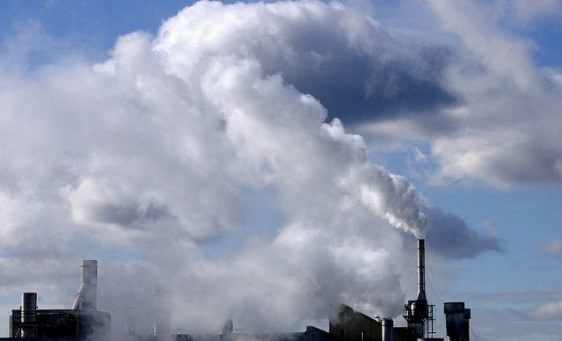
The business case for science-based targets to reduce emissions
Sept 25th 2015
As national leaders gather in New York for Climate Week, many of the world’s 500 largest companies are already considering their impact on Earth’s climate. Eighty percent of them have set targets to reduce their climate-warming emissions.
This is up from 43 percent 10 years ago, reflecting the growing expectations that large corporations should set emission reduction goals – a result of continuous collaboration by private sector leaders, policy makers, climate researchers and other company stakeholders.
While these company targets are extremely important, the challenge now is to ensure that they are credible. Various methods, including the Science-Based Targets initiative’s Sectoral Decarbonizaton Approach, can determine how much a company should cut emissions to help reach the international goal to limit global warming to 2 degrees C (3.6 degrees F) to avoid the most dangerous consequences of climate change. Most corporate emission reduction targets don’t pass this test.
The good news is that bold climate action is actually good for business, and that realization is fueling corporate sector interest in setting science-based targets.
As of today, over 60 companies including Honda, Nestlé and Hewlett-Packard have committed to setting these science-based targets to cut their greenhouse emissions, and some have publicly announced them. Companies with science-based targets include Coca Cola Enterprises, which will cut its emissions from operations by 50 percent from 2007 levels by 2020; Procter & Gamble, pledging to cut its emissions from operations by 30 percent from 2010 levels by 2020; and General Mills, targeting a 28 percent decrease from 2010 levels by 2025.
These commitments can help give companies a long-term competitive advantage in their markets and safeguard future profitability.
What do these companies have in common? Dozens of conversations with business leaders reveal some compelling common reasons why science-based targets are right for them:
Emission reduction targets can help financial performance.
Strong financial performance and climate action are not mutually exclusive. In fact, the business case for climate action is as strong as ever. One example: analysis of data reported to CDP shows that companies with published emissions targets were more profitable than those with no targets.
Ambitious targets drive innovation and transform business practices.
Too often, corporate greenhouse gas (GHG) targets are short-term, low-ambition or arbitrarily set, yielding important but only incremental improvements. In contrast, science-based targets prompt employees to envision the company as a leader in the future low-carbon economy and to start on that transformational path. Ambitious goals spur innovation in products and technologies, new ways to source materials and new ways to expand markets.
Renewable energy companies have started a thriving industry in response to the need for low-carbon energy. Twenty-five years ago, electricity from renewable sources cost three to four times more than that generated from fossil fuels. Since then, costs have dropped considerably and most new energy sources being developed today are renewable.
But the renewable energy sector will not be the only low-carbon success story. Today, the global market for low-carbon goods and services is worth more than $5.5 trillion and is growing at 3 percent per year.
Companies that act now will be ready for changing regulations and public policy.
This December, world leaders will gather in Paris to negotiate a historic climate agreement, building upon national climate plans countries are in the process of submitting. A positive outcome in Paris is expected to significantly accelerate the transition to the low-carbon economy via new government regulations and policies. For example, almost a quarter of the world’s GHG emissions are or will soon be regulated by government carbon pricing. Taking ambitious actions now helps companies stay ahead of future policies and regulations, giving them a competitive edge and a smoother transition.
Companies that are serious about climate action are earning reputational rewards and strengthening relationships with stakeholders.
Public awareness of the dangers of climate change is now widespread. According to National Geographic, approximately half of consumers worldwide believe climate change will have a negative effect on their own lives, and 65 percent of consumers agree that human activity is responsible for climate change.
Investors are increasingly assessing the carbon risks in their portfolios and expect companies to disclose and take action accordingly. The Portfolio Decarbonization Coalition, launched in September last year, aims to form a coalition of investors that will commit to decarbonizing a total of $100 billion in institutional investment across asset classes.
Companies increasingly want to do business with suppliers that are taking climate change seriously so that they can reduce GHG emissions in their value chain. Diageo, L’Oreal, Walmart and Unilever all have ambitious targets to cut down emissions across their supply chains.
There is also reputational risk in being seen as a laggard. That perception is already growing among companies that see aligning emission reduction targets with climate science as a necessary common-sense approach.
Companies that act now will see the greatest long-term gains.
We expect significant benefits for companies that establish themselves as leaders in the transition to the low-carbon economy, but companies must act now to reap the greatest rewards. Delaying action will require more dramatic cuts later to catch up with regulations.
Companies that haven’t already aligned their emission reduction targets with climate science can find the resources and support they need through the Science-Based Targets initiative, another partnership between the private sector and climate researchers that proves that we can solve big problems together and seize opportunities for growth along the way.



